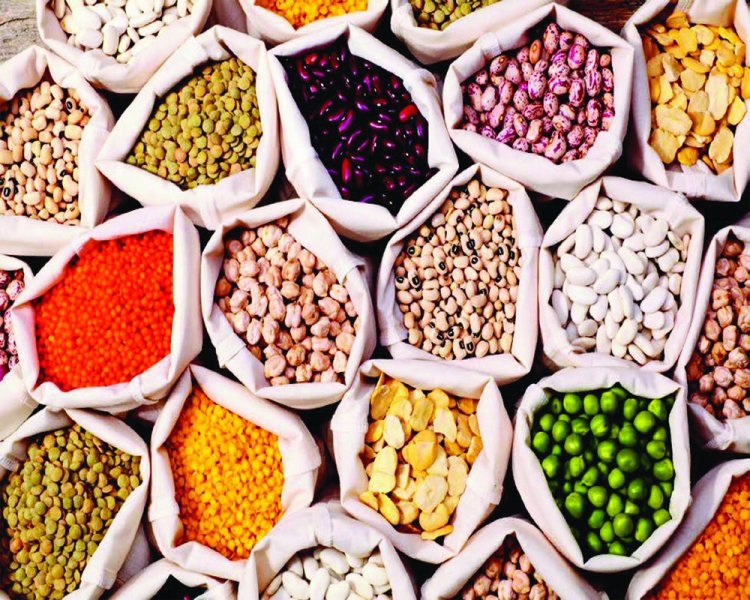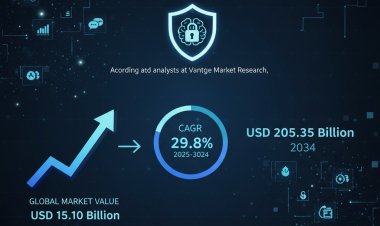Global Seed Market Growth, Trends, and Future Outlook 2025–2035
Explore the global seed market’s growth, key drivers, segmentation, leading players, technological advancements, regional insights, and investment opportunities from 2025 to 2035.

Key Takeaways
- The global seed market was valued at USD 67.09 million in 2022 and is projected to reach USD 111.03 million by 2030, growing at a CAGR of 6.50%.
- Rising demand from food, beverage, animal feed, and biofuel industries is fueling market expansion.
- Population growth in countries like China and India is a major driver, increasing the need for food grains and quality seeds.
- The market faces challenges such as counterfeit seeds and the need for high-quality, resilient varieties.
- Segmentation includes seed type, crop, treatment, and regional analysis, with Asia-Pacific leading the market.
- Key players are investing in innovation, biotechnology, and strategic partnerships to maintain competitiveness.
- Future trends include advancements in genetic engineering, sustainable seed production, and increased R&D investment.
Overview of Global Seed Market Growth
The Global Seed Market is experiencing robust growth, driven by a confluence of factors that underscore the critical role of seeds in modern agriculture. According to analysts at Vantage Market Research, the market was valued at USD 67.09 million in 2022 and is expected to reach USD 111.03 million by 2030, reflecting a healthy CAGR of 6.50% during the forecast period of 2023–2030. Seeds are the foundation of agricultural productivity, serving as the starting point for the cultivation of crops that feed, clothe, and fuel the world. The importance of seeds extends beyond mere germination; they are the carriers of genetic potential, determining crop yield, quality, resistance to pests and diseases, and adaptability to changing climatic conditions.
The expansion of the seed market is closely linked to the rising demand from various sectors, including food, beverage, animal feed, and biofuels. As global populations swell, particularly in densely populated countries like China and India, the pressure to produce more food grains intensifies. This, in turn, drives the demand for high-yielding, disease-resistant, and climate-resilient seed varieties. Farmers in both developed and developing regions are increasingly adopting advanced agricultural practices to maximize yields and profitability, further propelling the growth of the seed industry.
Moreover, the global seed market benefits from the consistent adoption of modern agricultural methods, such as precision farming, integrated pest management, and the use of genetically modified (GM) seeds. These practices enhance productivity and sustainability, making them attractive to farmers seeking to balance economic and environmental considerations. The market’s growth trajectory is also supported by government initiatives aimed at improving food security, promoting sustainable agriculture, and encouraging the use of certified seeds.
In summary, the global seed market is on an upward trajectory, fueled by demographic trends, technological advancements, and the ever-increasing need for efficient and sustainable food production systems. The market’s future will be shaped by ongoing innovation, regulatory developments, and the ability of industry players to address emerging challenges and opportunities.
Market Drivers and Challenges
The global seed market is influenced by a complex interplay of drivers and challenges that shape its growth and evolution. One of the most significant drivers is the relentless growth of the global population, which is projected to reach nearly 10 billion by 2050. This demographic surge places immense pressure on agricultural systems to produce more food, feed, and raw materials, necessitating the use of high-quality seeds that can deliver superior yields and withstand biotic and abiotic stresses.
Another key driver is the increasing demand for high-quality seed varieties that offer enhanced traits such as drought tolerance, pest and disease resistance, and improved nutritional content. Advances in plant breeding, biotechnology, and genetic engineering have enabled the development of seeds tailored to specific agro-climatic conditions and market requirements. This has led to the proliferation of hybrid and genetically modified seeds, which are gaining traction among farmers seeking to optimize productivity and profitability.
The expansion of the biofuels industry also contributes to the rising demand for seeds, particularly those used in the cultivation of energy crops such as corn, soybean, and canola. As countries strive to reduce their reliance on fossil fuels and transition to renewable energy sources, the cultivation of biofuel crops is expected to increase, further boosting the seed market.
However, the market is not without its challenges. One of the most pressing issues is the prevalence of counterfeit and substandard seeds, which can undermine farmer confidence, reduce yields, and compromise food security. The proliferation of fake seeds is particularly problematic in developing regions, where regulatory oversight and enforcement may be limited. Addressing this challenge requires concerted efforts from industry stakeholders, governments, and international organizations to strengthen seed certification, traceability, and quality assurance systems.
Other challenges include the high cost of advanced seed technologies, regulatory hurdles related to the approval and commercialization of genetically modified seeds, and concerns about the environmental and health impacts of certain seed treatments and traits. Additionally, climate change poses a significant threat to seed production and crop performance, necessitating ongoing research and innovation to develop resilient seed varieties.
In conclusion, while the global seed market is poised for continued growth, it must navigate a range of challenges to realize its full potential. Success will depend on the ability of industry players to innovate, collaborate, and adapt to the evolving needs of farmers and consumers.
Segmentation of Seed Market
The global seed market is highly segmented, reflecting the diversity of crops, seed types, treatments, and regional preferences. Understanding this segmentation is crucial for stakeholders seeking to identify growth opportunities and tailor their strategies to specific market segments.
By Type and Crop:
Seeds can be broadly classified into conventional, hybrid, and genetically modified (GM) categories. Conventional seeds are open-pollinated and have been used for generations, while hybrid seeds are produced by cross-breeding two different parent lines to achieve desirable traits such as higher yields and disease resistance. GM seeds, on the other hand, are developed through genetic engineering to introduce specific traits, such as herbicide tolerance or insect resistance.
Crop-wise, the seed market encompasses a wide range of categories, including cereals and grains (e.g., wheat, rice, corn), oilseeds (e.g., soybean, canola, sunflower), fruits and vegetables (e.g., tomato, cucumber, melon), and other crops such as cotton and forage. Cereals and grains account for the largest share of the market, driven by their importance as staple foods and animal feed.
Seed Treatments and Traits:
Seed treatments involve the application of chemical, biological, or physical agents to seeds before planting, with the aim of protecting them from pests, diseases, and environmental stresses. Common treatments include fungicides, insecticides, and micronutrient coatings. The adoption of treated seeds is increasing, as farmers seek to enhance crop establishment and early growth.
In terms of traits, the market is witnessing growing demand for seeds with enhanced characteristics such as drought tolerance, pest and disease resistance, improved nutritional content, and adaptability to specific agro-climatic conditions. The development of such traits is facilitated by advances in plant breeding, molecular biology, and biotechnology.
Regional Market Analysis:
Geographically, the seed market is segmented into North America, Europe, Asia-Pacific, Latin America, and the Middle East & Africa. Asia-Pacific dominates the market, driven by large-scale agricultural production in countries like China and India. North America and Europe are also significant markets, characterized by high adoption rates of advanced seed technologies and strong regulatory frameworks. Latin America and Africa represent emerging markets with significant growth potential, fueled by increasing investments in agriculture and rising demand for food.
In summary, the segmentation of the seed market reflects the complexity and diversity of global agriculture. By understanding the unique characteristics and needs of each segment, industry players can develop targeted strategies to capture market share and drive growth.
Key Players in the Seed Market
The global seed market is characterized by the presence of several prominent companies that play a pivotal role in shaping industry trends, driving innovation, and meeting the evolving needs of farmers worldwide. These key players are engaged in the development, production, and distribution of a wide range of seed varieties, leveraging advanced technologies and strategic partnerships to maintain their competitive edge.
Prominent Companies and Their Contributions:
Leading companies in the seed market include Bayer CropScience, Corteva Agriscience, Syngenta, BASF, Limagrain, KWS SAAT SE, Sakata Seed Corporation, and Rijk Zwaan, among others. These firms have established strong global footprints, with extensive research and development (R&D) capabilities, robust distribution networks, and a diverse portfolio of seed products.
Innovations and Technological Advancements:
Innovation is at the heart of the seed industry, with companies investing heavily in R&D to develop new seed varieties that offer superior performance, resilience, and value. Advances in genetic engineering, molecular breeding, and biotechnology have enabled the creation of seeds with enhanced traits such as herbicide tolerance, insect resistance, and improved nutritional profiles. Precision breeding techniques, such as CRISPR-Cas9 gene editing, are also gaining traction, allowing for the targeted modification of specific genes to achieve desired outcomes.
Strategic Partnerships and Collaborations:
To stay ahead in a competitive market, key players are increasingly forming strategic partnerships and collaborations with research institutions, universities, and other industry stakeholders. These alliances facilitate the exchange of knowledge, access to cutting-edge technologies, and the development of innovative solutions to address emerging challenges. Mergers and acquisitions are also common, enabling companies to expand their product portfolios, enter new markets, and achieve economies of scale.
In conclusion, the key players in the seed market are driving industry growth through innovation, collaboration, and a relentless focus on meeting the needs of farmers and consumers. Their efforts are instrumental in shaping the future of agriculture and ensuring global food security.
Future Trends in Seed Technology
The future of the global seed market is being shaped by a wave of technological advancements and evolving consumer preferences that are redefining the way seeds are developed, produced, and utilized. One of the most significant trends is the rapid progress in genetic engineering and molecular breeding, which is enabling the creation of seeds with highly specific and desirable traits.
Advancements in Genetic Engineering:
Genetic engineering technologies, such as CRISPR-Cas9 and other gene-editing tools, are revolutionizing plant breeding by allowing for precise modifications at the DNA level. This has opened up new possibilities for developing seeds that are resistant to pests and diseases, tolerant to drought and extreme temperatures, and capable of delivering higher yields and improved nutritional content. The adoption of genetically modified (GM) seeds is expected to increase, particularly in regions facing significant agricultural challenges.
Rise of Sustainable and Organic Seed Production:
As consumers become more conscious of environmental and health issues, there is growing demand for sustainably produced and organic seeds. Seed companies are responding by developing varieties that are well-suited to organic farming systems, require fewer chemical inputs, and promote biodiversity. The use of cover crops, heirloom varieties, and open-pollinated seeds is also gaining popularity among organic and smallholder farmers.
The Role of Biotechnology in Seed Development:
Biotechnology is playing an increasingly important role in seed development, enabling the identification and incorporation of beneficial traits through marker-assisted selection, genomic selection, and other advanced techniques. These approaches accelerate the breeding process, reduce costs, and increase the likelihood of success. Additionally, the integration of digital technologies, such as data analytics and artificial intelligence, is enhancing the efficiency and precision of seed research and development.
In summary, the future of seed technology is bright, with ongoing innovation poised to deliver seeds that are more productive, resilient, and sustainable. These advancements will be critical in meeting the challenges of global food security, climate change, and evolving consumer preferences.
Regional Insights and Dynamics
The global seed market exhibits significant regional variation, reflecting differences in agricultural practices, crop preferences, regulatory environments, and market dynamics. Understanding these regional insights is essential for stakeholders seeking to capitalize on growth opportunities and navigate the complexities of the global market.
Dominance of Asia-Pacific in Market Share:
Asia-Pacific is the largest and fastest-growing region in the global seed market, accounting for a substantial share of global sales. The region’s dominance is driven by the sheer scale of agricultural production in countries like China and India, which together account for a significant portion of the world’s population and food demand. Government initiatives to promote modern farming practices, improve seed quality, and enhance food security are further supporting market growth.
Growth Patterns in North America and Europe:
North America and Europe are mature markets characterized by high adoption rates of advanced seed technologies, strong regulatory frameworks, and a focus on sustainability. In North America, the United States is a major player, with extensive cultivation of GM crops such as corn and soybean. Europe, while more cautious in its approach to GM seeds, is witnessing growth in hybrid and organic seed segments, driven by consumer demand for sustainable and high-quality food products.
Emerging Markets and Their Potential:
Latin America, Africa, and the Middle East represent emerging markets with significant growth potential. These regions are experiencing rising demand for food, feed, and biofuels, coupled with increasing investments in agricultural infrastructure and technology. However, challenges such as limited access to quality seeds, inadequate regulatory frameworks, and the prevalence of counterfeit products must be addressed to unlock their full potential.
In conclusion, regional dynamics play a crucial role in shaping the global seed market. By understanding the unique characteristics and opportunities of each region, industry players can develop targeted strategies to drive growth and achieve long-term success.
Investment and Research Opportunities
The global seed market presents a wealth of investment and research opportunities for stakeholders seeking to capitalize on the growing demand for high-quality, resilient, and sustainable seeds. As the world grapples with the challenges of population growth, climate change, and food security, the need for innovative solutions has never been greater.
Increasing Investments in R&D:
Leading seed companies and research institutions are investing heavily in research and development to create new seed varieties that can withstand biotic and abiotic stresses, deliver higher yields, and meet the evolving needs of farmers and consumers. These investments are driving breakthroughs in genetic engineering, molecular breeding, and biotechnology, enabling the development of seeds with enhanced traits and performance.
Focus on Improving Crop Resilience:
Improving crop resilience is a key focus area for research and investment, particularly in the face of climate change and increasing environmental pressures. Efforts are underway to develop seeds that are tolerant to drought, heat, salinity, and other stresses, as well as resistant to pests and diseases. These innovations are critical for ensuring the sustainability and productivity of agricultural systems in a changing world.
Opportunities for Growth in Developing Regions:
Developing regions, such as Africa, Latin America, and parts of Asia, offer significant opportunities for growth, driven by rising demand for food, increasing investments in agriculture, and government initiatives to promote modern farming practices. However, realizing this potential requires addressing challenges such as limited access to quality seeds, inadequate infrastructure, and regulatory barriers.
In summary, the global seed market is ripe with opportunities for investment and research, with the potential to deliver significant economic, social, and environmental benefits. By fostering innovation, collaboration, and capacity-building, stakeholders can help shape a more sustainable and food-secure future.
Conclusion
The global seed market is at the forefront of agricultural innovation, playing a vital role in ensuring food security, sustainability, and economic growth. With robust market growth, driven by demographic trends, technological advancements, and evolving consumer preferences, the industry is poised for continued expansion. By addressing challenges, embracing innovation, and capitalizing on emerging opportunities, stakeholders can contribute to a more resilient and productive global food system.
☎ Contact Us:
224 W 35th St Ste 500 New York,
USA/Canada Toll Free +1(877) 462-2282
+1(212) 951-1369
✉ Email: [email protected]
???? Website: https://www.vantagemarketresearch.com
FAQs
- What factors are driving the growth of the global seed market?
- Which regions are experiencing the highest demand for seeds?
- How is the seed market projected to perform in the coming years?
- What industries are contributing to the expansion of the seed market?


















